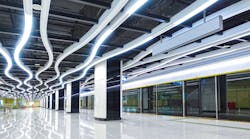Photo 146834436 © Photomall | Dreamstime.com
ABI sees 220M network lighting control unit shipments to smart buildings by 2030
May 9, 2023
Related To: ABI Research
Sponsored Recommendations
Sponsored Recommendations
According to a new report from global technology intelligence firm ABI Research, shipments of connected luminaires and related equipment into a new generation of smart buildings will grow to nearly 220 million units by 2030, at a CAGR of 22.6%.
As building owners, energy companies, tenants, regulators, and others look to improve building performance and appeal, the analyst contends that Network Lighting Control (NLC) technology will be at the vanguard of many smart building projects.
NLC delivers intelligent automation and management of lighting across a property and promises additional benefits available to LED lighting systems.
By integrating lighting control with light level and occupancy sensors, energy efficiency is improved and can be leveraged for occupant comfort/safety, space utilization, and, ultimately, building appeal. Combined with the growing adoption of wireless connectivity, ABI Research notes that NLC is emerging as an option across various building types and sizes.
Jonathan Collins, Smart Homes & Buildings research director at ABI Research, remarked: "The ubiquity of lighting demand across commercial buildings, combined with efficiency and other benefits, will make smart lighting the first smart building investment for many properties. With a host of dynamic offerings, increasingly simple and flexible installation and maintenance, NLC is pushing smart building capabilities well beyond the traditional preserve of the largest and/or most prestigious projects."
According to ABI, a host of players from long-standing lighting giants such as Signify and Acuity Brands, as well as NLC specialists including Casambi, Enlighted, INGY, Silvair, and Wirepas, are leveraging wireless to drive NLC into new projects and retrofits alike.
The analyst notes that, increasingly, NLCs can be deployed, commissioned, and reconfigured by engineers using smartphone apps and without dedicated network cabling, local gateways, and the predetermined topology that has long complicated and dominated deployments.
Even so, the analyst firm cautions that the NLC market remains one of the disparate approaches and vendor ecosystems, despite the ongoing development of ecosystem rather than vertically integrated NLC offerings.
"For some years still, clients will have to weigh up several conflicting technologies, approaches, and offerings within the space to determine which best suits their immediate and future smart building requirements," ABI's Collins concluded.
ABI Research's NLC and New Opportunities in Smart Building Lighting application analysis report is part of the company's Smart Homes and Buildings research service, which includes research, data, and insights. Learn more about the report.
For more news, projects, and profiles in the smart buildings ecosystem, subscribe to the SBT newsletter and follow us on LinkedIn, Twitter, and Facebook.
